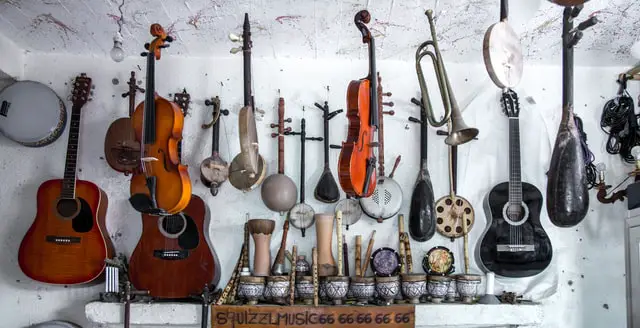Why are classical guitars so expensive?
Classical guitars, also known as Spanish guitars, have a rich history dating back to the 16th century. These instruments have been used by some of the greatest musicians of all time, including classical composers like Bach and Mozart, as well as contemporary artists like John Williams and Andres Segovia.
But why are classical guitars so expensive? Several factors contribute to the high cost of these instruments.
First and foremost, classical guitars are made with high-quality materials. The wood used for the body and neck of a classical guitar is typically made from cedar or spruce, both of which are expensive and hard to come by. These woods are chosen for their durability and tonal qualities, as they produce a warm, rich sound that is characteristic of classical guitars.
In addition to the wood, classical guitars also feature intricate detailing and craftsmanship. These instruments are often handmade by skilled luthiers who take great care in every step of the construction process. From the shaping of the body to the placement of the frets, every detail is carefully considered to create a truly exceptional instrument.
Another factor that contributes to the high cost of classical guitars is the time and effort required to produce them. Handmade instruments take longer to create than mass-produced ones, and the luthiers who build them are highly skilled craftsmen who deserve to be compensated for their time and expertise.
But perhaps the most significant reason why classical guitars are so expensive is the level of attention and care that goes into their maintenance. These instruments require regular restringing, cleaning, and adjustment to maintain their optimal performance. This level of care is especially important for professional musicians who rely on their instruments for their livelihood.
In conclusion, classical guitars are expensive for several reasons. From the high-quality materials and craftsmanship that go into their construction, to the time and effort required to produce them, these instruments are truly works of art. Their price tag may be steep, but for those who are serious about their craft, the investment is well worth it.
Frequently Asked Questions:
How to string a classical guitar?
- First, you will need to purchase a set of classical guitar strings.
- Begin by loosening the string tension by turning the tuning peg in a counterclockwise direction.
- Once the string is loose enough, carefully remove it from the bridge.
- Take the new string and thread it through the hole in the bridge.
- Hold the string up to the tuning peg, making sure it is not twisted or kinked.
- Hold the string in place with your left hand, while using your right hand to turn the tuning peg in a clockwise direction.
- Continue turning the tuning peg until the string is taut and in tune.
- Repeat this process for each string, starting with the thinnest and working your way up to the thickest.
- Once all strings have been replaced, make any necessary adjustments to the string tension and check to make sure each string is in tune.
How to restring a classical guitar?
- First, make sure you have all the necessary materials, including new strings, wire cutters, and a string winder (optional but recommended).
- Begin by loosening the strings. Use the wire cutters to cut the strings just above the bridge.
- Remove the strings one by one, taking care not to damage the bridge or the soundboard.
- Once all the strings have been removed, clean the guitar thoroughly, paying special attention to the bridge, soundhole, and fingerboard.
- Begin restring the guitar by threading the new strings through the hole in the bridge. Make sure the strings are properly aligned and evenly spaced.
- Next, attach the strings to the tuning pegs at the headstock. Make sure the strings are wound tightly and evenly around the pegs.
- Using the string winder (or your fingers), tune the strings to the desired pitch. Start with the lower strings first, then work your way up to the higher strings.
- Once all the strings are tuned, check the action of the guitar by playing it. If the strings are too high or too low, adjust the truss rod accordingly.
- Finally, check that the strings are seated properly and make any necessary adjustments.
Remember to take your time and be careful when restringing your classical guitar. A little extra effort will go a long way in ensuring that your instrument sounds its best.
How to change a classical guitar string?
- Remove the old string by loosening the tuning peg.
- If necessary, carefully remove the old string from the bridge by gently pulling it through the hole.
- Thread the new string through the hole in the bridge, making sure it is secured in place.
- Bring the string up and over the tuning peg, leaving a little slack.
- Wind the string around the tuning peg, pulling it tight as you go.
- Continue winding the string around the peg until it is secure, making sure the string is not too loose or too tight.
- Repeat the process for each string, starting with the lowest string and working your way up to the highest.
- Once all strings are changed, tune the guitar to your desired pitch.
How to play a classical guitar?
- First, make sure you have a classical guitar and a comfortable place to sit or stand while playing.
- Begin by sitting or standing with good posture and positioning your guitar comfortably. Make sure the guitar is at a comfortable height and that your arms are positioned comfortably to reach the strings.
- Hold the pick in your dominant hand, with the flat side facing your palm and the pointed end facing out.
- Strum the strings with the pick, starting with the low strings and working your way up to the high strings. Use a down-and-up motion, strumming from the bottom of the strings to the top.
- Practice picking individual strings with the pick, using a down and up motion to pluck each string.
- Practice playing chords by placing your fingers on different strings and strumming all the strings at once.
- Practice playing melodies by picking or strumming individual strings in a specific order to create a tune.
- Pay attention to the music you are playing and use proper techniques, such as using vibrato or adding accents to certain notes.
- Practice regularly to improve your skills and become comfortable playing the classical guitar.
What is the classical guitar?
The classical guitar is a type of acoustic guitar that is typically made with a narrow waist, a flat back, and larger body size. It is usually played with a classical or fingerstyle technique, which involves the use of the fingertips and nails to pluck the strings. The classical guitar is commonly used to play classical, folk, and popular music, and it is often associated with a more refined and formal style of music compared to other types of guitars. It is also known for its rich and mellow tone, which is achieved through the use of nylon strings rather than the steel strings found on other guitars.
How to tie classical guitar strings?
- Start by loosening the string tension on your guitar. This can be done by turning the tuning peg counterclockwise.
- Once the string is loose, use a pair of wire cutters to cut off the excess string from the tuning peg end.
- Take the new string and thread it through the hole in the guitar’s bridge.
- Pull the string through until there are about 6 inches of slack.
- Hold the string firmly between your thumb and index finger, and wrap the string around the tuning peg in a clockwise direction.
- Continue wrapping the string around the peg until it is secure. Make sure that the string is not twisted, and that it is seated properly in the peg hole.
- Once the string is securely wrapped around the peg, begin tightening the string by turning the peg clockwise. As you turn the peg, the string will begin to wind around it and the tension will increase.
- When the string is in tune, cut off any excess string with the wire cutters.
- Repeat this process for each string, starting with the thinnest string and working your way up to the thickest.
- Once all of the strings are in place, give them a final tune and your classical guitar is ready to play!
How to hold a classical guitar?
To hold a classical guitar, follow these steps:
- Stand up straight and relax your arms and shoulders.
- Place the guitar on your right leg with the body facing upwards and the neck facing away from you.
- Rest the bottom of the guitar on the inside of your right leg, just above your knee. The bottom of the guitar should be angled slightly upwards.
- Hold the guitar with your left hand, using your thumb to support the neck of the guitar.
- Place your right hand on the guitar’s body, using your thumb to support the back of the guitar.
- Adjust the guitar’s position as needed to find a comfortable and stable playing position.
Remember to keep your hands relaxed and your arms and shoulders relaxed while playing. This will help you maintain good posture and avoid fatigue while playing.
How to tune a classical guitar?
To tune a classical guitar, follow these steps:
- Start by tuning the low E string. This string is the thinnest and produces the lowest pitch. Use an electronic tuner or pitch pipe to ensure that the string is in tune.
- Once the low E string is in tune, move on to the A string. This string is located next to the low E string and is slightly thicker. Again, use an electronic tuner or pitch pipe to ensure that the string is in tune.
- Next, tune the D string. This string is located next to the A string and is slightly thicker. Use the same method as before to tune the string.
- Now, tune the G string. This string is located next to the D string and is slightly thicker. Use the same method as before to tune the string.
- Finally, tune the B string. This string is located next to the G string and is slightly thicker. Use the same method as before to tune the string.
- Once all strings are in tune, play a few chords to ensure that the guitar is properly tuned. If you hear any notes that are out of tune, go back and adjust the relevant string until it is in tune. Overall, it is important to take your time and be patient when tuning a classical guitar as it can be a delicate process.
What is the difference between acoustic and classical guitar?
Acoustic guitar and classical guitar are both string instruments that are played by plucking the strings with the fingers or a plectrum. However, there are some key differences between the two types of guitars:
- Construction: Acoustic guitars have a hollow body that amplifies the sound produced by the strings. Classical guitars have a solid body, which means they do not have a built-in sound amplifier.
- Strings: Classical guitars typically have nylon strings, while acoustic guitars usually have steel strings. Nylon strings produce a softer, warmer sound and are easier on the fingers. Steel strings produce a brighter, louder sound and are more durable.
- Neck and headstock: Classical guitars have wider necks and longer headstocks than acoustic guitars, which allows for the use of wider fingerboard widths and larger frets. This makes classical guitars easier to play for beginners.
- Style of music: Classical guitars are often used to play classical, folk, and flamenco music, while acoustic guitars are more versatile and are used to play a wide range of music styles, including rock, pop, and country.
- Price: Classical guitars are generally cheaper than acoustic guitars due to their simpler construction and materials used. Acoustic guitars can vary in price depending on the brand, materials, and features.
How to learn classical guitar?
- Find a qualified classical guitar teacher: It is important to have a knowledgeable and experienced teacher to guide you through the classical guitar repertoire and techniques. Look for a teacher who has a classical guitar degree or has studied with classical guitarists.
- Practice regularly: As with any instrument, consistent practice is key to improving your skills and abilities. Set aside time every day to practice classical guitar, and make sure to follow your teacher’s practice schedule and assignments.
- Start with the basics: Begin by learning basic classical guitar techniques such as proper hand positioning, fingerpicking, and right-hand arpeggio patterns. Master these techniques before moving on to more advanced pieces.
- Learn classical guitar repertoire: Begin by learning simple classical guitar pieces and gradually work your way up to more challenging pieces. Make sure to practice both melody and accompaniment techniques.
- Attend classical guitar concerts and workshops: Attend classical guitar concerts and workshops to learn from experienced classical guitarists and to gain inspiration for your playing.
- Use online resources: There are many online resources available for learning classical guitar, including videos, tutorials, and sheet music. Make use of these resources to supplement your in-person lessons and practice.
Do expensive classical guitars sound better?
It is generally believed that expensive classical guitars tend to sound better due to the quality of materials used and the craftsmanship involved in their construction. However, this is not always the case. Some cheaper classical guitars may sound just as good or even better than some expensive ones due to factors such as the individual instrument’s unique characteristics and the player’s skill level. Ultimately, the sound quality of a classical guitar depends on a variety of factors, including the quality of the materials, the craftsmanship, and the player’s skill level and technique.
Are classical guitars worth it?
It depends on the individual’s needs and preferences. Classical guitars are generally considered to be of a higher quality and have a more traditional, refined sound compared to other types of guitars. They are also typically made with wood materials that age well over time, increasing their value and worth. However, classical guitars may not be suitable for certain styles of music and may be more expensive to purchase and maintain. Ultimately, whether a classical guitar is worth it depends on the individual’s goals and how they plan to use the instrument.













